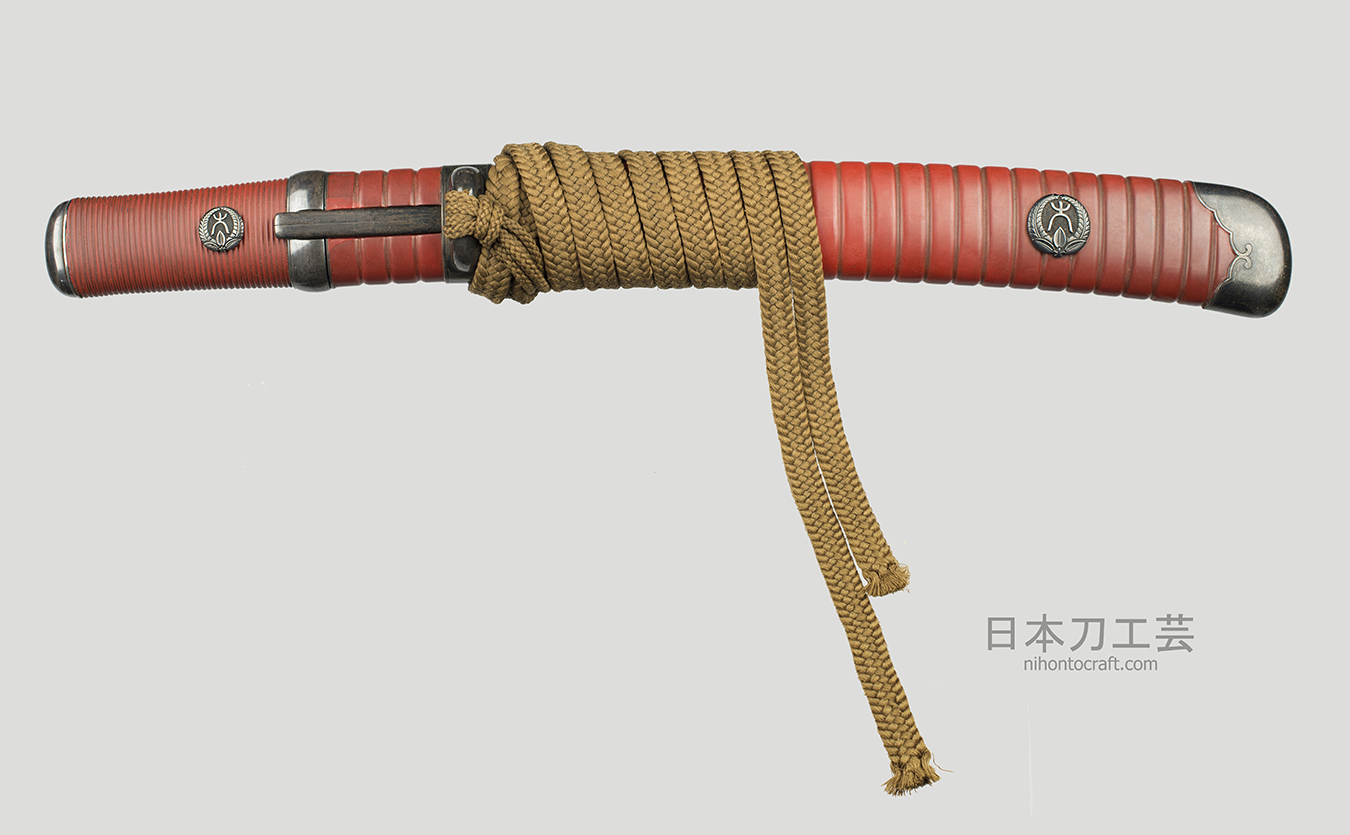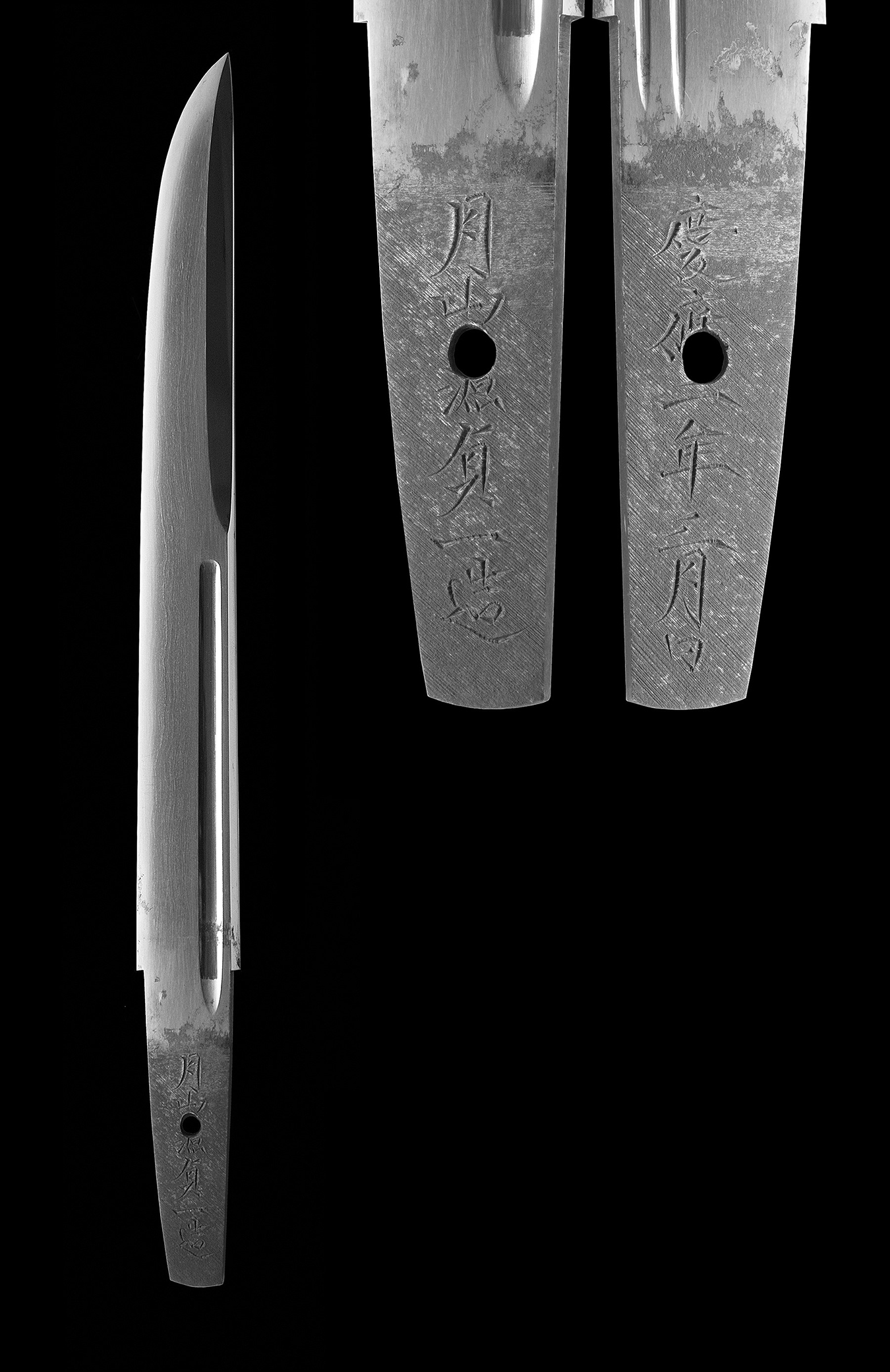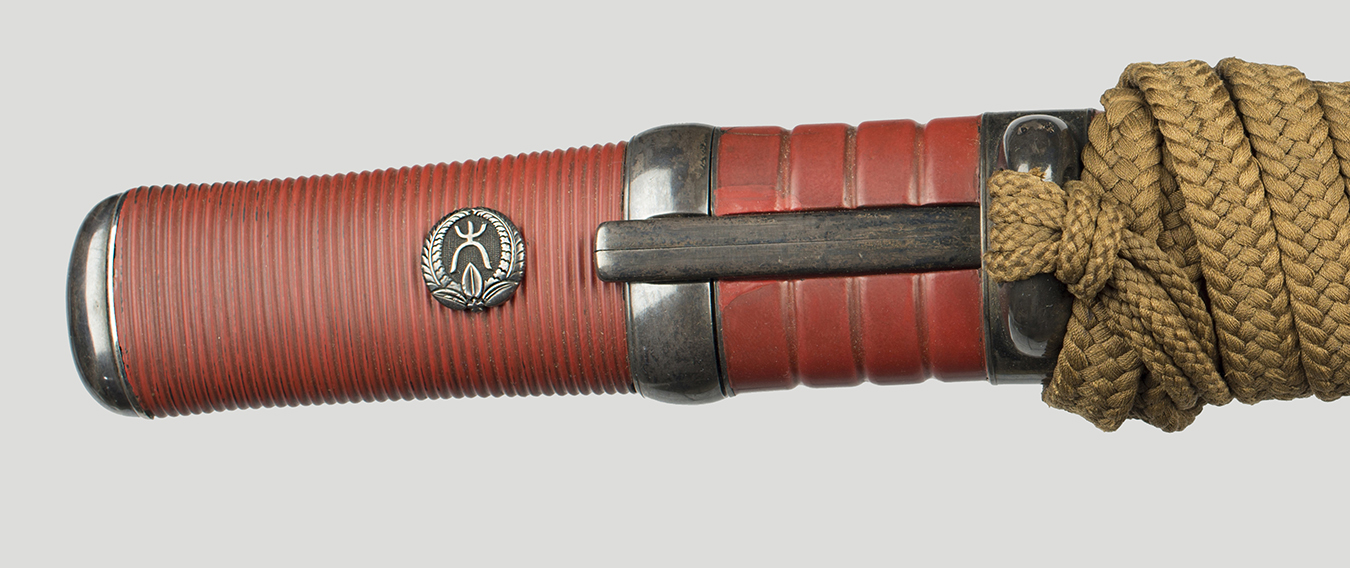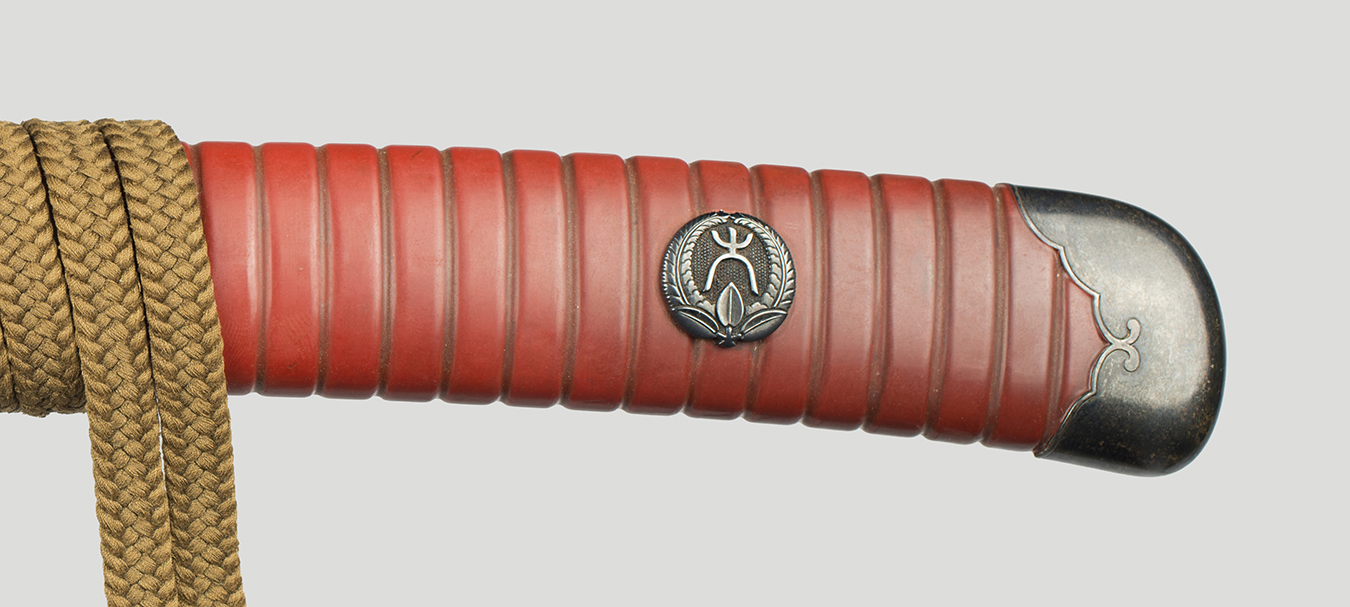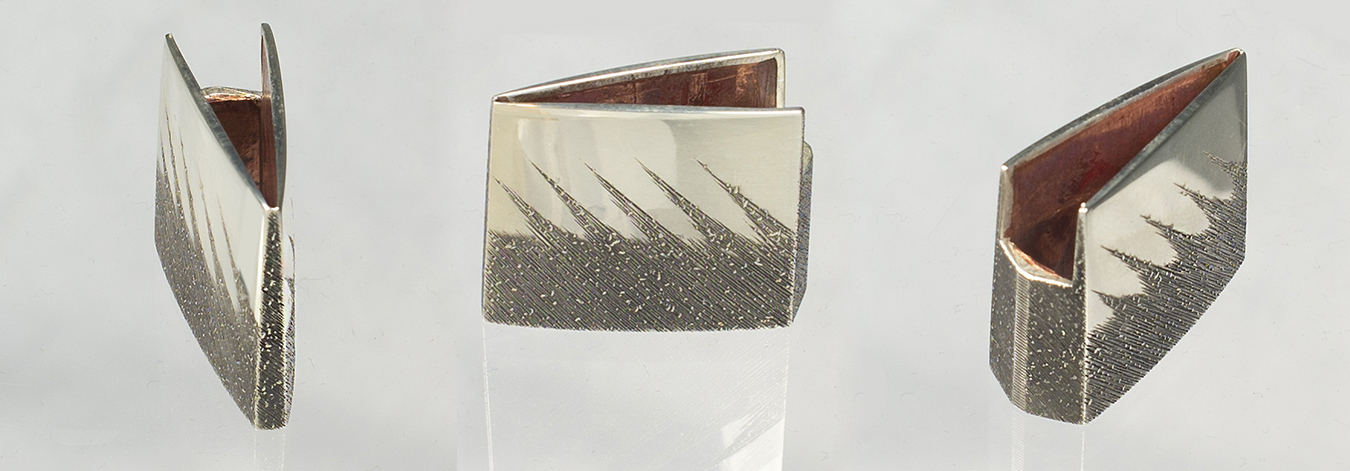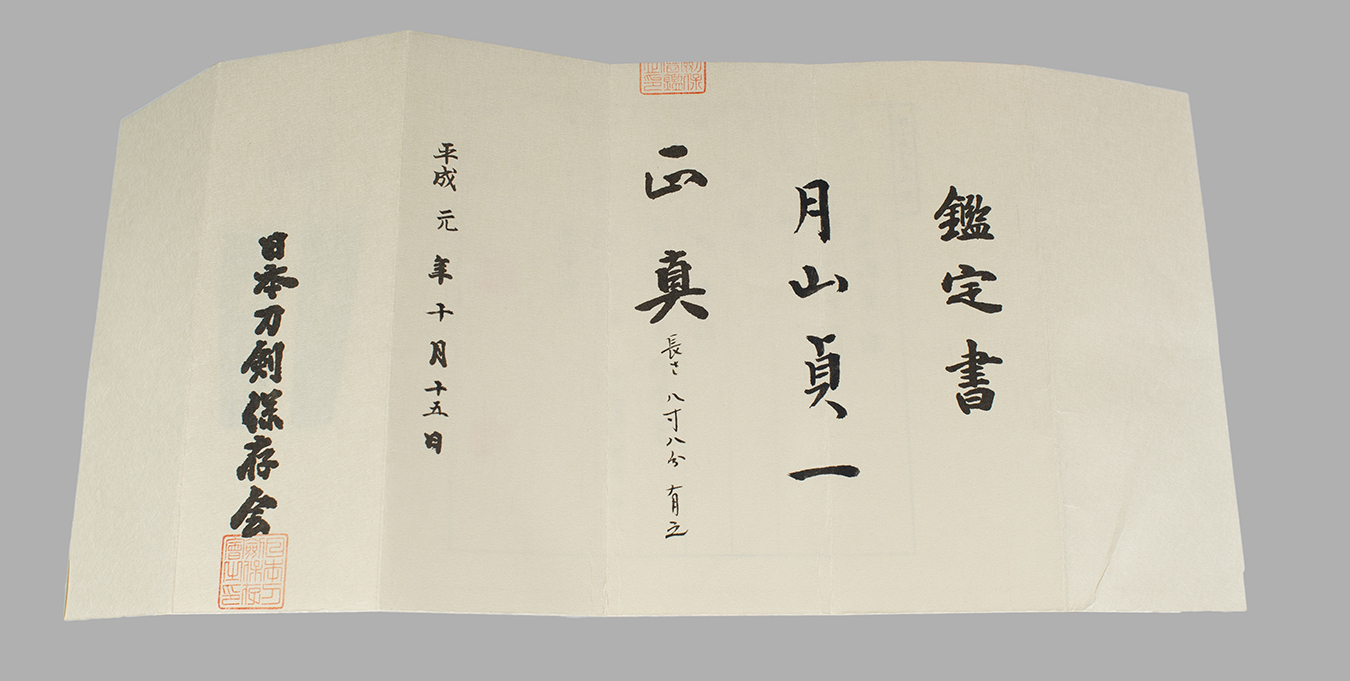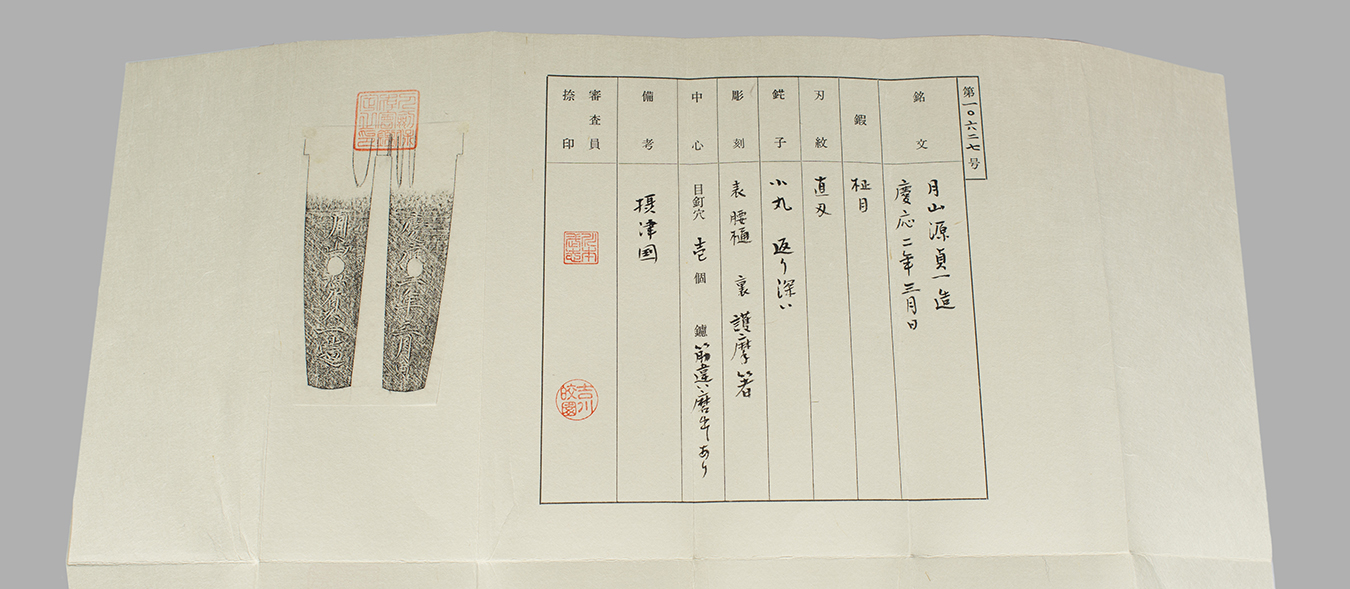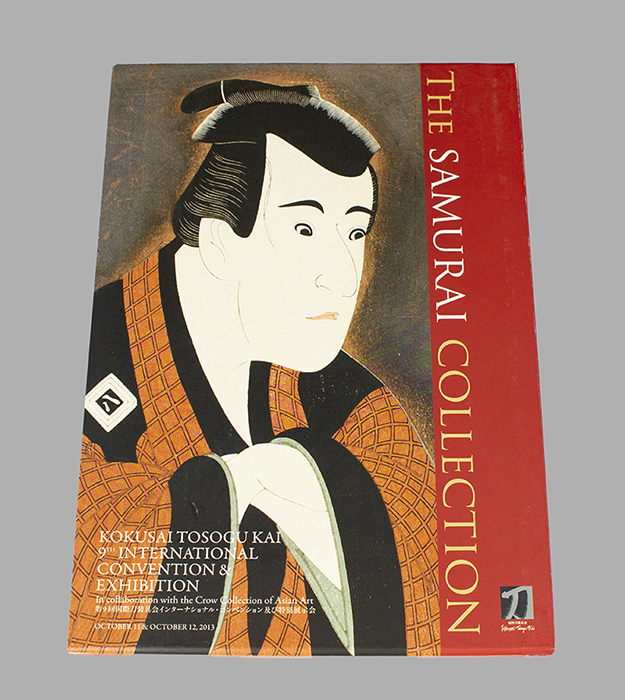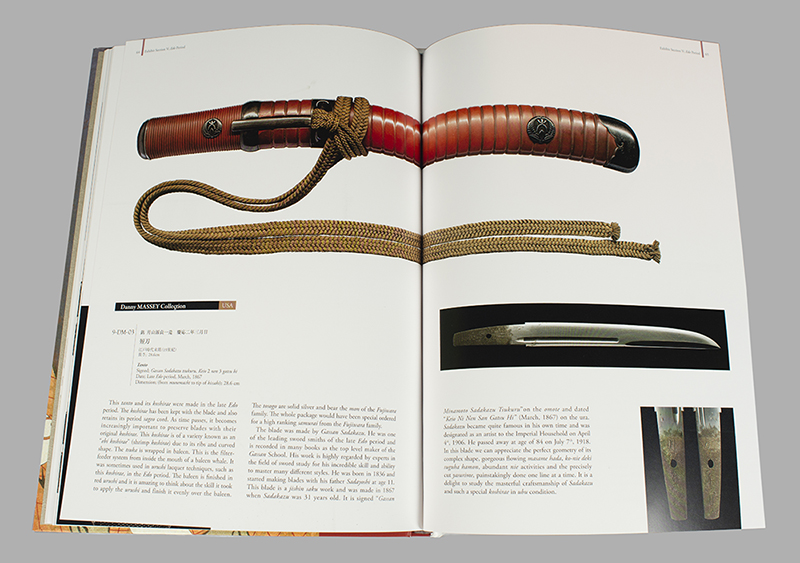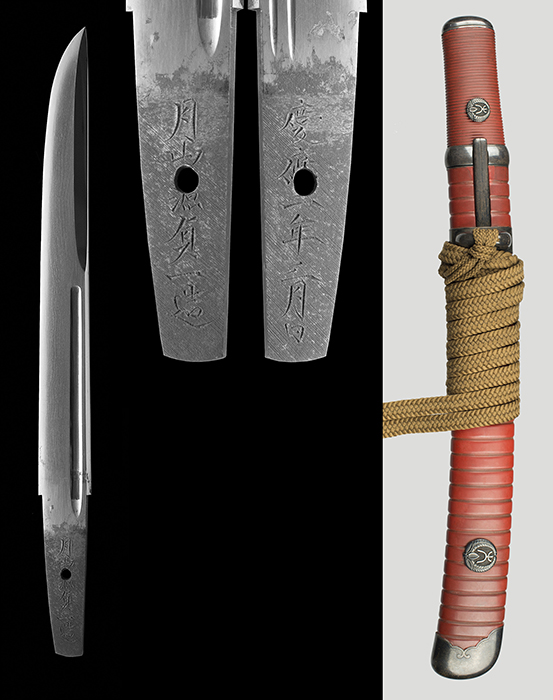|
| |||||||||||||||||||||||||||||||||||||||
Hamon : Ko-nie deki suguha. The nioi-guchi is bright and packed with ko-nie. The are many vigorous kinsuji and there are sunagashi.
Boshi : Ko-maru and hakikake with a long return on both sides.
Kitae : Vivid masame hada. The jigane has a gently flowing pattern and is packed with long and vibrant chikei. Fine ji-nie can be seen.
About this sword : Gassan Sadakazu was born in 1836. He was the adopted son of Gassan Sadayoshi and began making swords at the age of fourteen. He made daisaku for his father and then had a long carrer. He passed away in 1918. Gassan Sadakazu was designated as Teishitsu Gigei-in (Imperial Household Artist) on April 4th, 1906. He made swords in Bizen, Soshu, Yamashiro, Yamato and Gassan tradtions. This Yamato Hosho style tanto is an example of Sadakazu's work in the prime of his life. The horimono of a maru dome katana hi and maru dome gomabashi are outstanding. Overall the blade captures the spirit of old Yamato Hosho wonderfully and the workmanship matches exactly that illustrated in the Nihonto Koza as Sadakazu's "text book" Yamato den style.
This blade is accompanied by a fine koshirae. This koshirae has never been altered and is in ubu condition. It is special to find a blade with its original and unaltered koshirae and this example is particularly well made.
This tanto by Gassan Sadakazu and its koshirae were published in the 9th Kokusai Tosogu Kai catalog in 2013. The following is the text from the publication:
This tanto and its koshirae were made in the late Edo period. The koshirae has been kept with the blade and also retains its period sageo cord. As time passes, it becomes increasingly important to preserve blades with their original koshirae. This koshirae is of a variety known as an "ebi koshirae" (shrimp koshirae) due to its ribs and curved shape. The tsuka is wrapped in baleen. This is the filter-feeder system from inside the mouth of a baleen whale. It was sometimes used in urushi lacquer techniques, such as this koshirae, in the Edo period. The baleen is finished in red urushi and it is amazing to think about the skill it took to apply the urushi and finish it evenly over the baleen. The tosogo are solid silver and bear the mon of the Fujiwara family. The whole package would have been special ordered for a high ranking samurai from the Fujiwara family.
The blade was made by Gassan Sadakazu. He was one of the leading sword smiths of the late Edo period and is recorded in many books as the top level maker of the Gassan School. His work is highly regarded by experts in the field of sword study for his incredible skill and ability to master many different styles. He was born in 1836 and started making blades with his father Sadayoshi at age 11. This blade is a jishin saku work and was made in 1866 when Sadakazu was 30 years old. It is signed "Gassan Minamoto Sadakazu Tsukuru" on the omote and dated "Keio Ni Nen San Gatsu Hi" (March, 1866) on the ura. Sadakazu became quite famous in his own time and was designated as an Artist to the Imperial Household on April 4th, 1906. He passed away at age of 84 on July 7th, 1918. In this blade we can appreciate the perfect geometry of its complex shape, gorgeous flowing masame hada, ko-nie deki suguha hamon, abundant nie activities and the precisely cut yasurime, painstakingly done one line at a time. It is a delight to study the masterful craftsmanship of Sadakazu and such a special koshirae in ubu condition.
This Sadakazu was awarded a Kanteisho paper by the NTHK under the late Yoshikawa Kentaro in 1989. Papers issued under Yoshikawa Kentaro are held in high regard. He is counted as one of the kantei experts of modern times and was quite conservative and strict in his judgment.
There is a tsunagi for the koshirae, shira-saya for the blade and a silver foil habaki. The tsunagi and shira-saya were made by Brian Tschernega. Mr. Tschernega has won the top prize at NBTHK habaki making competitions. The habaki is the original Edo period one. It was previously damaged and and Mr. Tschernega re-foiled it in the same "Yujo" style as the original. Brian Tschernega's work is high-end and the exacting precision of his hand is shown well in the photos below.
This Sadakazu is in old polish with some scratches and inactive rust as shown in the photos. There are no kizu and the blade is exceedingly healthy. The quality of the old polish is remarkable, it is easy to ignore the scratches and enjoy the blade as it is.
The popularity of Gassan School works is among the most sought after areas of sword collecting. This tanto is by the top level maker of the Gassan school. The opportunity to acquire a signed and dated Sadakazu, a Jo Jo Saku smith, with its original koshirae is rare indeed. An absolute delight to recommend in every way.
SOLD

